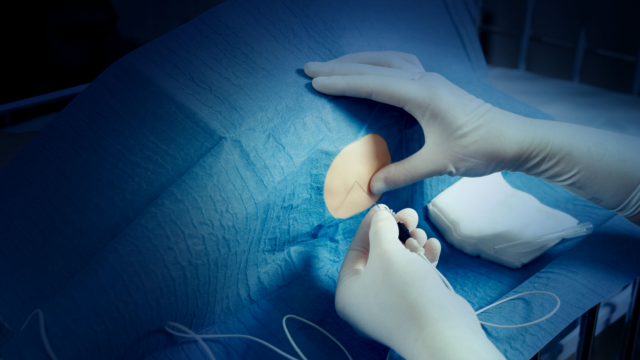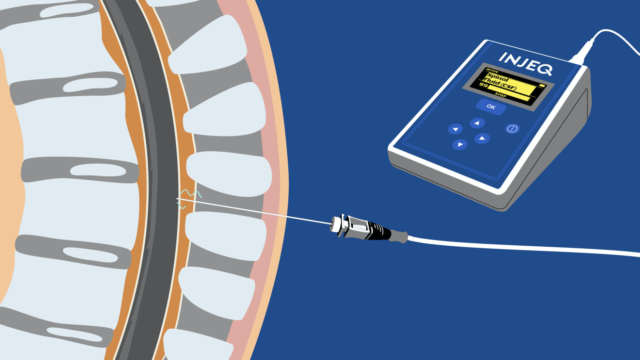INJEQ looks seriously at patient and public involvement in healthcare

Patients are experts in their health problems.
On the one hand, when it comes to experiencing pain and fear, and on the other, when it comes to experiencing relief and happiness brought about by successful therapies and procedures. Instead of being mere targets of healthcare interventions, patients receive nowadays plenty of relevant information on their illnesses and treatment options. Therefore, it pays to appreciate the patients’ expertise as well. We here at Injeq want to see healthcare not only from the professional point of view but also from the patient’s eyes and hear their voices about their needs for solutions against pain and fear while providing improved care.
Lumbar puncture is an example of an occasionally painful and frightening clinical procedure. Over the last 130 years, lumbar punctures have been performed with a passive metal needle, relying blindly on the haptic feeling from the needle tip to the physician’s fingertips and knowledge of lumbar anatomy. While a notable proportion of patients undergoing lumbar puncture will get post-dural puncture headaches, this complication is generally accepted as an inherent part of the procedure. Some patients are not even informed in advance that they may get a debilitating headache within a day or two after their lumbar puncture. Even if the patient had received proper information, the circumstances during the lumbar puncture are not optimal for comprehending and recollecting what was told about possible complications.
The novel Injeq IQ-Tip system was designed and developed with a smooth and efficient lumbar puncture in mind. The CE-marked system has been clinically evaluated in all-aged patients, including neonates and children with leukemia. The IQ-Tip system differs from the conventional spinal needle by being an active, tissue-recognizing device that gives an alarm when the needle tip reaches the cerebrospinal fluid in the spinal cavity, the ultimate target of the lumbar puncture. The clinical results have been promising. In pediatric patients with leukemia, the incidence of post-dural puncture headache was low compared to reported incidence values in comparable patient groups. Also, cerebrospinal fluid samples contaminated by blood cells were half less frequent compared to those collected with conventional spinal needles. Combining these benefits of the IQ-Tip system with its good first puncture success rate, we venture to say that the IQ-Tip system would be the patient’s preference as well.
Why is the IQ-Tip system not yet widely used in clinical practice? The answer is obvious. Medicine is highly conservative for a reason, and novel techniques require much time and compelling evidence on safety and performance to be accepted in healthcare. While the promising clinical results achieved so far with the IQ-Tip system are indications of great potential, we need more real-life evidence from lumbar punctures performed with the Injeq IQ-Tip system and more patient feedback. Therefore, we appeal to the patients and their families to discuss novel alternatives to perform a lumbar puncture with their doctors. Commonly, the doctor who performed the lumbar puncture will never hear about the patient’s complications. Usually, the doctor who performed the lumbar puncture does not give sick leave for the procedure-related severe headache. Also, in case of a severe post-dural puncture headache, an anesthesiologist may perform an epidural blood patch procedure to treat the condition, but the doctor who performed the lumbar puncture remains unaware of the complication. Shared information is likely to be remunerated.
Patient engagement can provide essential viewpoints that can be useful in creating more efficiency in healthcare services. This information is more important than ever, given the current financial priorities and societal challenges. By letting the public openly get information on the patient’s treatment alternatives and letting them understand their opinions matter and are heard, it is possible to get more resources to cope with challenges in healthcare and have money to treat people without the need to have money to treat complications. Efficient healthcare does not stand for quick-based doctor appointments but fewer complications after investing time and high-quality technology to treat patients even better. Efficient healthcare is what we want to contribute to here at Injeq. We want to hear the patients and interact with their doctors as well.
We value your opinions. Please contact at info@injeq.com.

Injeq IQ-Tip® system
for diagnosing neonatal meningitis
Working in an emergency room, the pressure for fast diagnoses is high 24 hours a day, and you routinely need to make quick decisions.
When you have a patient with suspected neonatal meningitis, it is imperative to get a quick CSF sample for diagnosis. Although lumbar puncture is basically an established and simple procedure, performing it to a neonate while under pressure can be challenging. Yet, the puncture must be performed for the sake of the little patient because undiagnosed meningitis is always a life-threatening condition.
In a recent study of Flett et al. [2], only 48% of lumbar punctures performed on neonatal babies were successful. Traumatic lumbar punctures occurred very frequently, in 47% of these neonatal cases (condition is defined as >500 erythrocytes/µL). Besides pain, failed punctures cause delays in diagnosis because of poor-quality samples, and additional expenses as the patient may have to stay longer in intensive care.
To perform optimally while making a lumbar puncture, let Injeq IQ-Tip® system help you. Smart Injeq IQ-Tip® system tells you when the needle tip reaches CSF in the subarachnoid space.
[2] Flett et al. Spinal needle size and traumatic neonatal lumbar puncture: an observational study (neo-LP). European Journal of Pediatrics (2020) 179:939–945.


